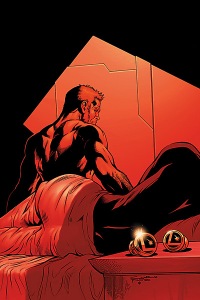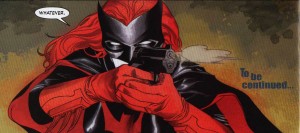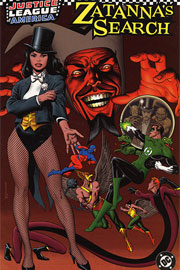ABCBTom upped the game with five parts of “a paper on One Piece for the Graphic Engagement seminar on the politics of comics at Purdue University.” Here they are, with more to come:
Sean (A Case Suitable for Treatment) Gaffney looked at the stories within the stories, the mini-arcs Oda sometimes creates in the chapter title pages:
Sam (A Life in Panels) Kusek takes a fusion approach, crossing the streams of Viz and DC:
Rob (Panel Patter) McMonigal learns a universal truth: “If I hadn’t been sold on the series by then, clown pirates hooked me.”
And last but not least, Khursten (Otaku Champloo) Santos takes a lovely look at the hurdles and rewards of getting into a 50+ volume series:




 Never fear, though. DC has collected at least one example of Anderson drawing a second-tier, fishnet-wearing heroine in its
Never fear, though. DC has collected at least one example of Anderson drawing a second-tier, fishnet-wearing heroine in its  I really, really need to do a big catch-up-on-CMX Amazon order at some point in the near future. This week sees the arrival of the seventh volume of Tomomi Yamashita’s
I really, really need to do a big catch-up-on-CMX Amazon order at some point in the near future. This week sees the arrival of the seventh volume of Tomomi Yamashita’s 